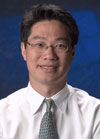I first heard about Andrew Yang back in 1993 when he founded a Fast SPICE company called Anagram, then acquired by Avant! in 1996. Andrew’s latest EDA company Apache Design, Inc.was started in 2001, then acquired by ANSYS in 2011. Most EDA mergers simply don’t work because of one or more reasons, like:
- Incompatible corporate cultures
- Product overlap, rendering EDA tools redundant
- Loss of key people, necessary for continued success
- Loss of a dedicated sales channel
- Product line neglect, leading to a stagnant EDA tool which becomes less competitive
- Lack of product or sales synergy

Andrew Yang, Apache co-founder
Being curious, I set out to uncover why the Ansys acquisition of Apache was successful and did not fall apart.
Q&A
Q: You’ve gone through more than one acquisition in EDA, so why did the ANSYS acquisition of Apache turn out successful?
We’ve had a simple strategy to have a non-overlapping product line, and a non-disruptive execution. Our Apache team has a great track record, so there was no disruption in how we did our business.
Other EDA companies can acquire overlapping product lines, which causes problems.
Q: How do products from Apache and ANSYS have synergy?
ANSYS always had the culture of expanding into new industries, like the semiconductor space. With Apache, now ANSYS adds chip-aware tools.
From Apache’s view we look at Chip-Package-System type of EDA analysis tools, so joining ANSYS helped us grow into new markets.
Q: Often in EDA, the company being acquired will have little control over product and sales direction. Why was this different with ANSYS?
The strategy was to not disrupt what was working with Apache in terms of product and sales. Apache customers continue to work with their same account managers and AE’s, so they’ve had a continuous experience.
Q: Is Apache growing?
Yes, in the past 8 quarters we have met or exceeded our sales targets, we’re growing faster than the EDA industry rate. Also our margins have been growing, not just sales.
Q: What is new at Apache since the acquisition?
We have been constantly innovating with new products and efficiently, so we have to keep up with Moore’s Law in terms of capacity. We are certified for FinFETs at TSMC and Samsung. With Distributed Machine Processing (DMP) technology it allows us to scale the capacity requirements for the next several years.
Other approaches like High Performance Computing (HPC) are focused on parallel processing, however with DMP we are solving highly-connected power meshes demanding highest accuracy.
Q: Who is using Apache tools today?
IC Insight published a list of the top 20 semiconductor companies, and we are serving all 20 of these leading companies with Apache tools. Most of our growth is coming from the mobile SoC companies. We serve 9 of the top 10 mobile SoC companies.
At automotive companies we are serving 9 of the top 10 companies.
Q: What are Apache’s plans for the next 12 months to ensure continued growth?
Keep our sales team focused on Apache products and AEs supporting customers, so no structural changes. Our strategy is to continue to keep up with Moore’s Law.
Q: What would you say to new EDA start-ups?
There are lots of challenges going down to the 10nm node to be solved.
Q: Does Apache have any lawsuits?
No, we have been at the forefront of technology so nobody has file suit against us.
Q: How about patents?
We do have a good number of patents and within ANSYS we continue to protect our intellectual property by adding more patents.
Further Reading
Dr. Yang blogged about the two year anniversary of the acquisition earlier this month.
lang: en_US
Share this post via:








Comments
There are no comments yet.
You must register or log in to view/post comments.